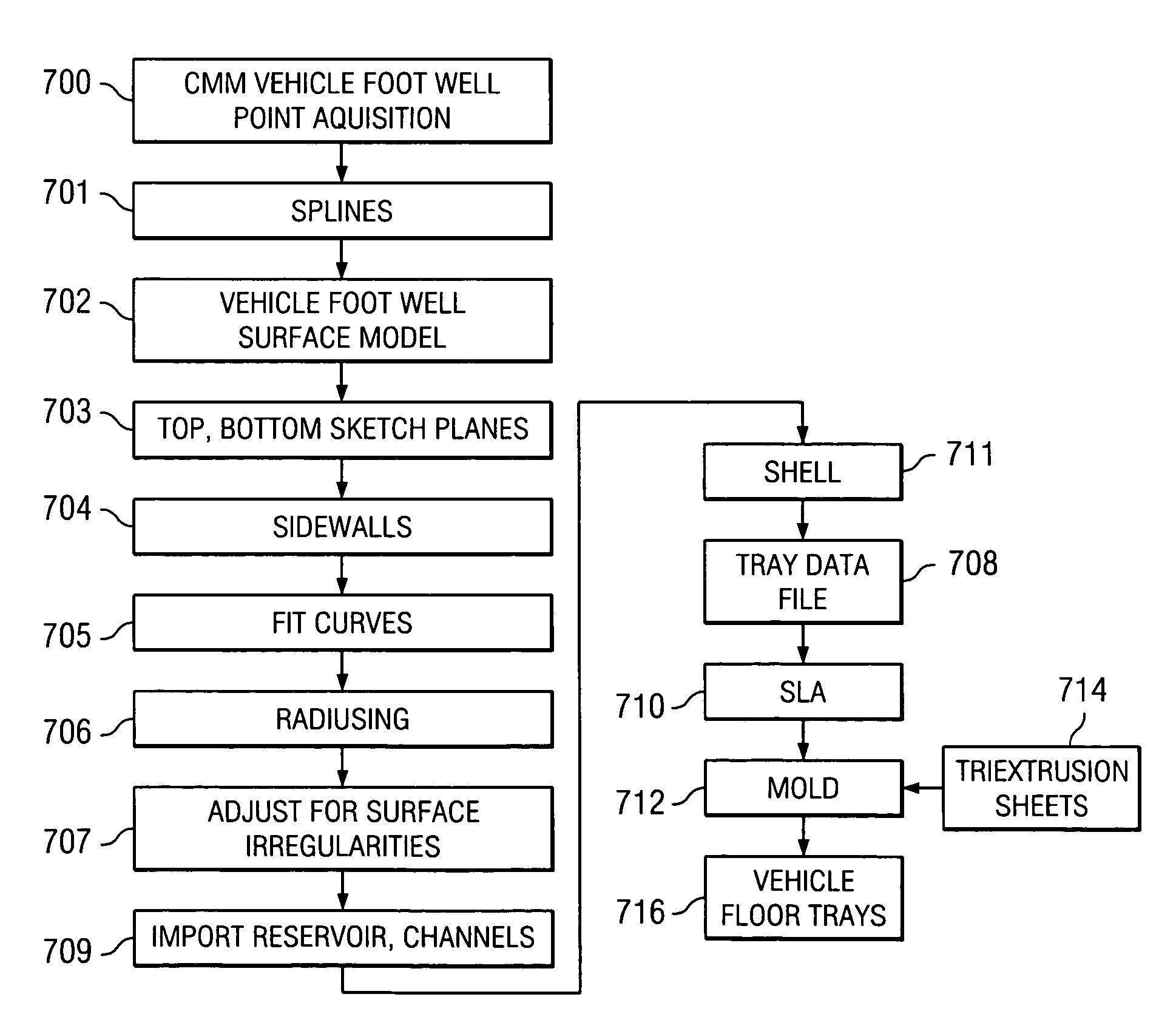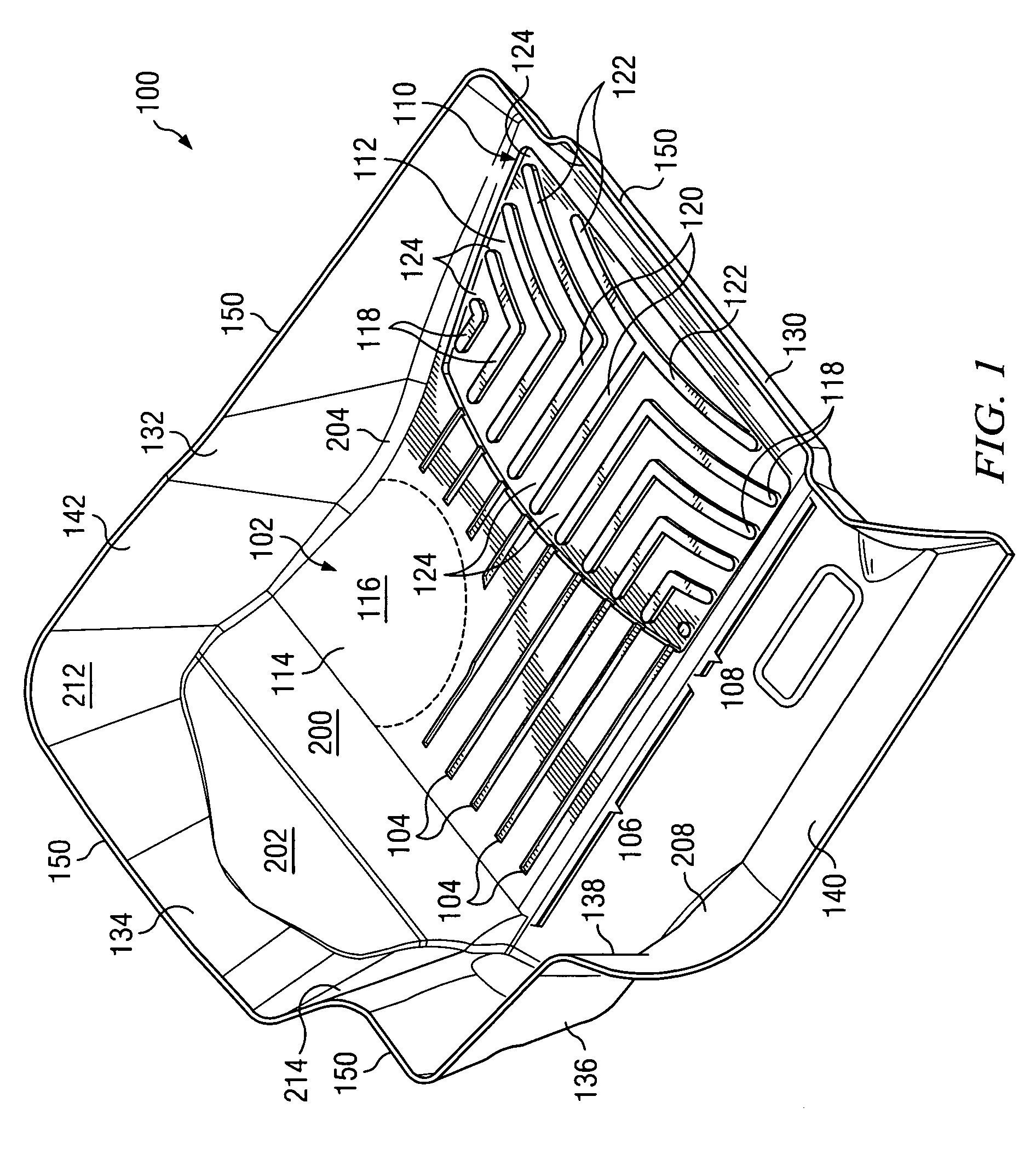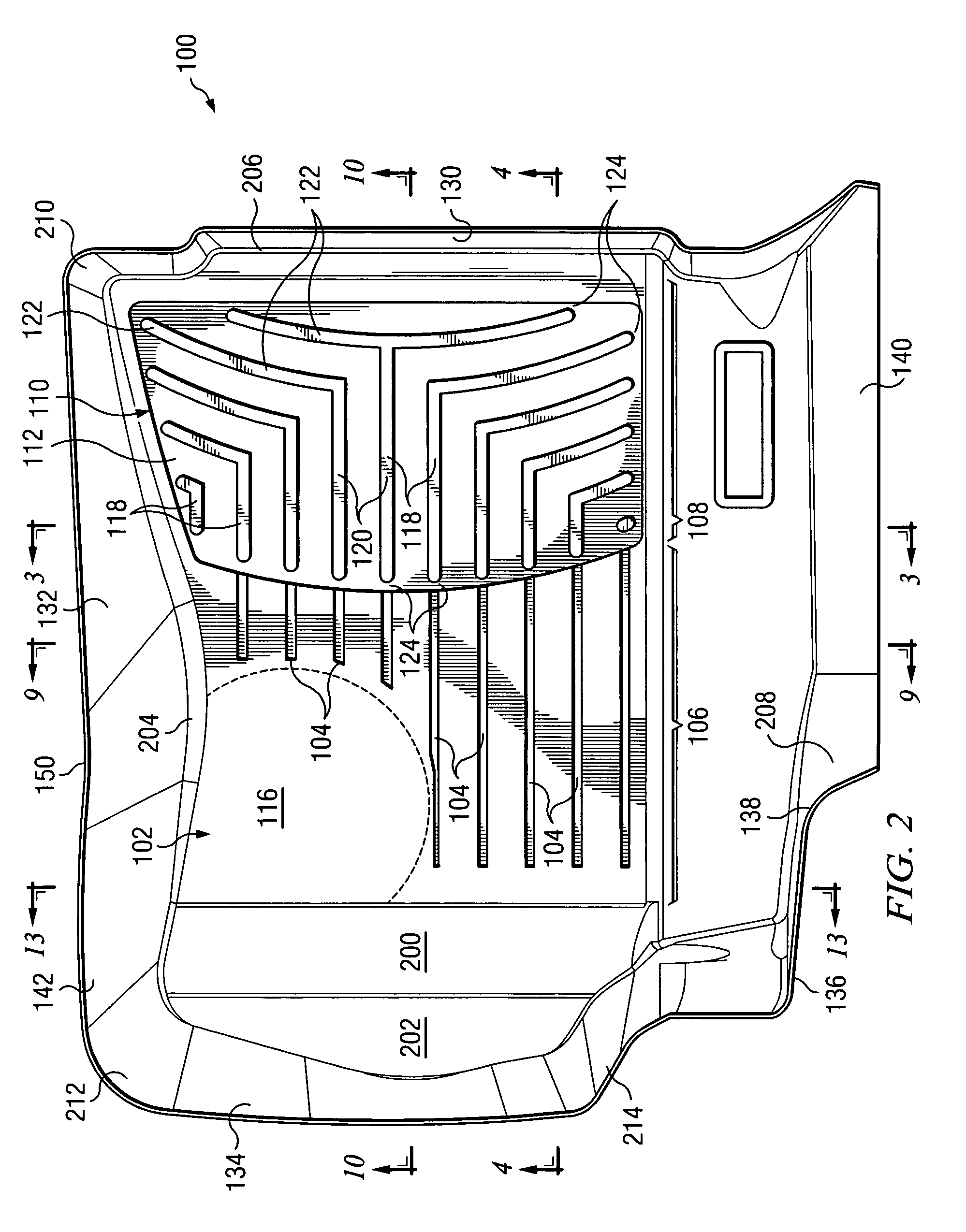Close-conforming vehicle floor tray with reservoir
a technology for vehicle floor mats and reservoirs, which is applied in the direction of roofs, vehicular safety arrangments, and mechanical means, etc., can solve the problems of difficult fitting of such a tray to the complex three-dimensional surface of the vehicle foot well, and the occupants of the vehicle have a tendency to push around the floor mats with their
- Summary
- Abstract
- Description
- Claims
- Application Information
AI Technical Summary
Benefits of technology
Problems solved by technology
Method used
Image
Examples
example 1
[0096]These tests determined static and kinetic coefficients of friction of a sheet of triextrusion material with respect to an object meant to emulate an typical occupant shoe outsole. This “shoe” was composed of Shore A Durometer 60 neoprene rubber, formed as a “sled” measuring 2.5 in. (6.35 cm)×2.5 in. (6.35 cm)×0.238 in. (0.605 cm). The “shoes” were drawn across an upper, textured surface of a 0.120 in. (0.305 cm) triextrusion sheet formed according to a preferred embodiment of the invention and measuring 4 in. (10.2 cm)×12 in. (30.5 cm), the test performed according to the procedure set forth in ASTM D 1894-01. The triextrusion sheet had, as its top layer, a blend of 75 wt. pct. VYRAM® Grade 101-75 / 25 wt. pct. HMPE. The core layer was 75 wt. pct. HMPE / 25 wt. pct. VYRAM® Grade 101-75. The bottom layer was a blend of 25 wt. pct. HMPE / 75 wt. pct. VYRAM® Grade 101-75. The bottom and top layers each comprised about 12.5% of the sheet thickness while the middle core layer comprised a...
example 2
[0098]Five neoprene rubber “sleds” fabricated as above were drawn across a 4 in. (10.1 cm)×12 in. (30.5 cm) sheet of a single-extrusion 75 wt. pct. HMPE / 25 wt. pct. VYRAM® Grade 101-75, according to ASTM D 1894-01. Results are tabulated below.
[0099]
SledStaticKineticSledKineticWeightCoefficientLoadWeightCoefficientTest NumberStatic Load (g)(g)of Friction(g)(g)of Friction1157200.10.785162200.10.8102151200.00.755148200.00.7403163200.10.815170200.00.8504146200.10.730148200.10.7405154200.10.770155200.10.775Average0.7710.783Std. Dev.0.0320.047
[0100]The above tests show that with respect to a typical shoe sole composition, a material consisting mostly of a thermoplastic elastomer like VYRAM® exhibits a higher coefficient of friction than a material consisting mostly of a high molecular weight polyolefin.
example 3
[0101]These tests compared the tensile strength of a sheet of triextruded material as above described with a sheet of single-extruded blend of material consisting of 75 wt. pct. VYRAM®, Grade 101-75, and 25 wt. pct. HMPE, and further with a sheet of a single-extruded blend of material of 75 wt. pct. HMPE and 25 wt. pct. VYRAM® Grade 101-75. The tested single-extruded VYRAM®-dominated sheet was approximately 0.070 in. (0.178 cm) thick, while the HMPE-dominated sheet was approximately 0.137 in. (0.348 cm) thick. The triextrusion sheet was about 0.120 in. (0.305 cm) thick. The triextrusion sheet, the single-extruded VYRAM®-dominated sheet and the single-extruded HMPE-dominated sheet were die-cut into samples having an average width of 0.250″0.635 cm). The test performed was according to the ASTM D 638-03 testing standard. A cross-head speed of 20 in. (50.8 cm) / min. was used. The extensiometer was set at 1000% based on 1.0″(2.54 cm) gauge length.
Samples were conditioned at 40 hours at 2...
PUM
| Property | Measurement | Unit |
|---|---|---|
| ninety degree angle | aaaaa | aaaaa |
| radius | aaaaa | aaaaa |
| total thickness | aaaaa | aaaaa |
Abstract
Description
Claims
Application Information
 Login to View More
Login to View More - R&D
- Intellectual Property
- Life Sciences
- Materials
- Tech Scout
- Unparalleled Data Quality
- Higher Quality Content
- 60% Fewer Hallucinations
Browse by: Latest US Patents, China's latest patents, Technical Efficacy Thesaurus, Application Domain, Technology Topic, Popular Technical Reports.
© 2025 PatSnap. All rights reserved.Legal|Privacy policy|Modern Slavery Act Transparency Statement|Sitemap|About US| Contact US: help@patsnap.com



